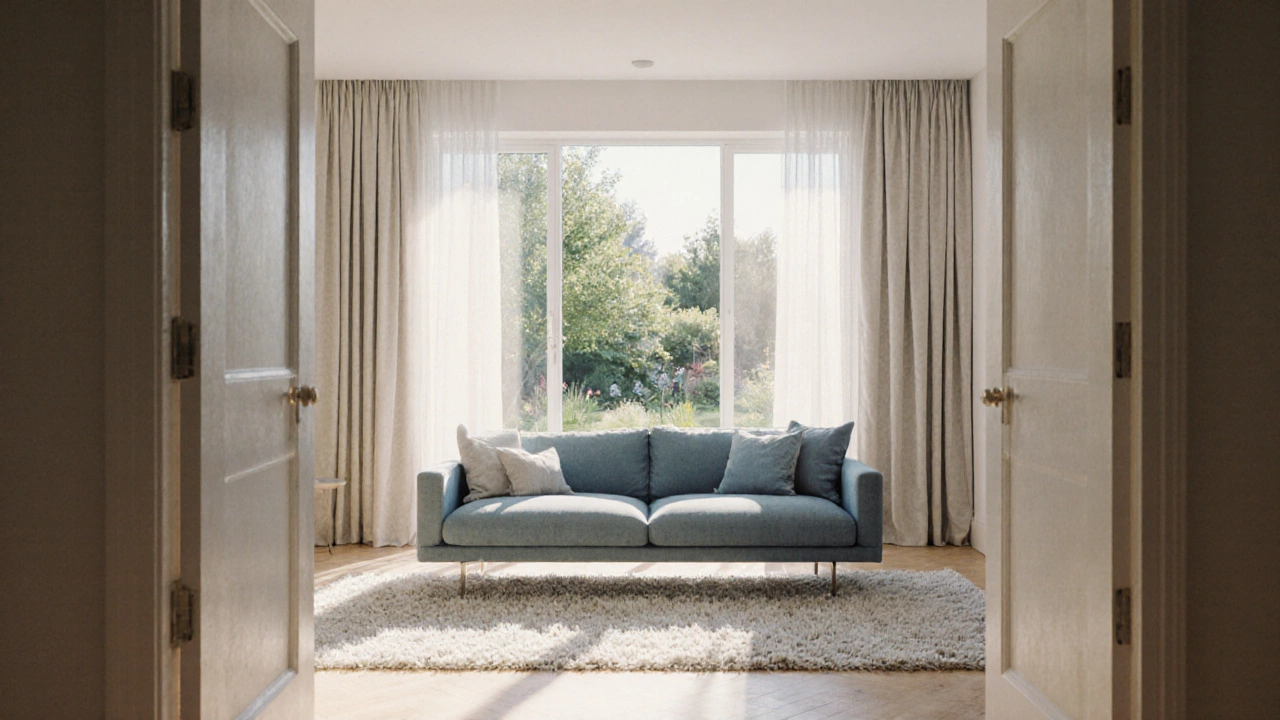
Couch Placement: Should You Put a Sofa in Front of a Window?
Explore the pros, cons, and practical tips for placing a couch in front of a window. Learn how to balance light, privacy, heat loss, and traffic flow for a comfortable living room.
When working with Couch in Front of Window, a seating arrangement where the primary sofa faces a large window or sliding glass door, you instantly change how light, space, and atmosphere interact in a room. This setup encompasses the concept of Window Placement, the strategic positioning of windows to maximize daylight and views and directly influences Natural Light, the amount of sunlight entering a space, affecting mood and visual comfort. By aligning the couch with the window, you couch in front of window creates a focal point that draws the eye outward, making the room feel larger and more inviting. The arrangement also ties into the broader Living Room, the central gathering area of a home, typically featuring seating, entertainment, and social zones, shaping how people move and interact. In short, proper placement of a couch influences room flow, enhances daylight, and sets the stage for a cohesive interior design.
First, think about the view. If the window offers a garden, street scene, or cityscape, positioning the couch directly opposite lets occupants enjoy that scenery without turning their heads. Second, assess glare. Direct sunlight can make TV watching uncomfortable, so pairing the couch with adjustable blinds or sheer curtains helps control brightness while preserving the airy feel. Third, maintain circulation. Keep at least 30‑cm of clear space between the couch and surrounding furniture to allow easy movement; this respects the principle that a well‑planned layout requires adequate pathways. Fourth, balance proportions. A low‑profile sofa pairs nicely with tall windows, creating a harmonious visual line, whereas a bulky sectional may overwhelm a small window opening. Finally, match the couch style to the room’s décor. A sleek, modern frame complements minimalist interiors, while a plush, tufted sofa adds softness to traditional spaces. All these decisions relate to space planning, comfort, and aesthetic goals, ensuring the couch works with the window rather than against it.
Beyond the basics, you can add functional touches that boost the overall experience. A slim side table next to the couch provides a spot for a lamp or coffee, reinforcing the link between seating and lighting. Textiles matter too—light-colored throws and cushions reflect sunlight, amplifying the bright ambiance, while darker fabrics absorb light, creating a cozier nook during evening hours. If the window faces a noisy street, consider acoustic curtains; they reduce sound while still letting light filter through. For homes with limited floor space, a compact loveseat or modular piece can sit in front of the window without crowding the room, demonstrating how flexible furniture choices adapt to the constraint of window placement. By treating the couch, window, and surrounding elements as interconnected parts of a single design system, you achieve a living room that feels both spacious and intentionally arranged. The articles below dive deeper into specific topics— from choosing the right sofa style to managing glare—so you’ll have clear, actionable guidance for every step of the process.

Explore the pros, cons, and practical tips for placing a couch in front of a window. Learn how to balance light, privacy, heat loss, and traffic flow for a comfortable living room.